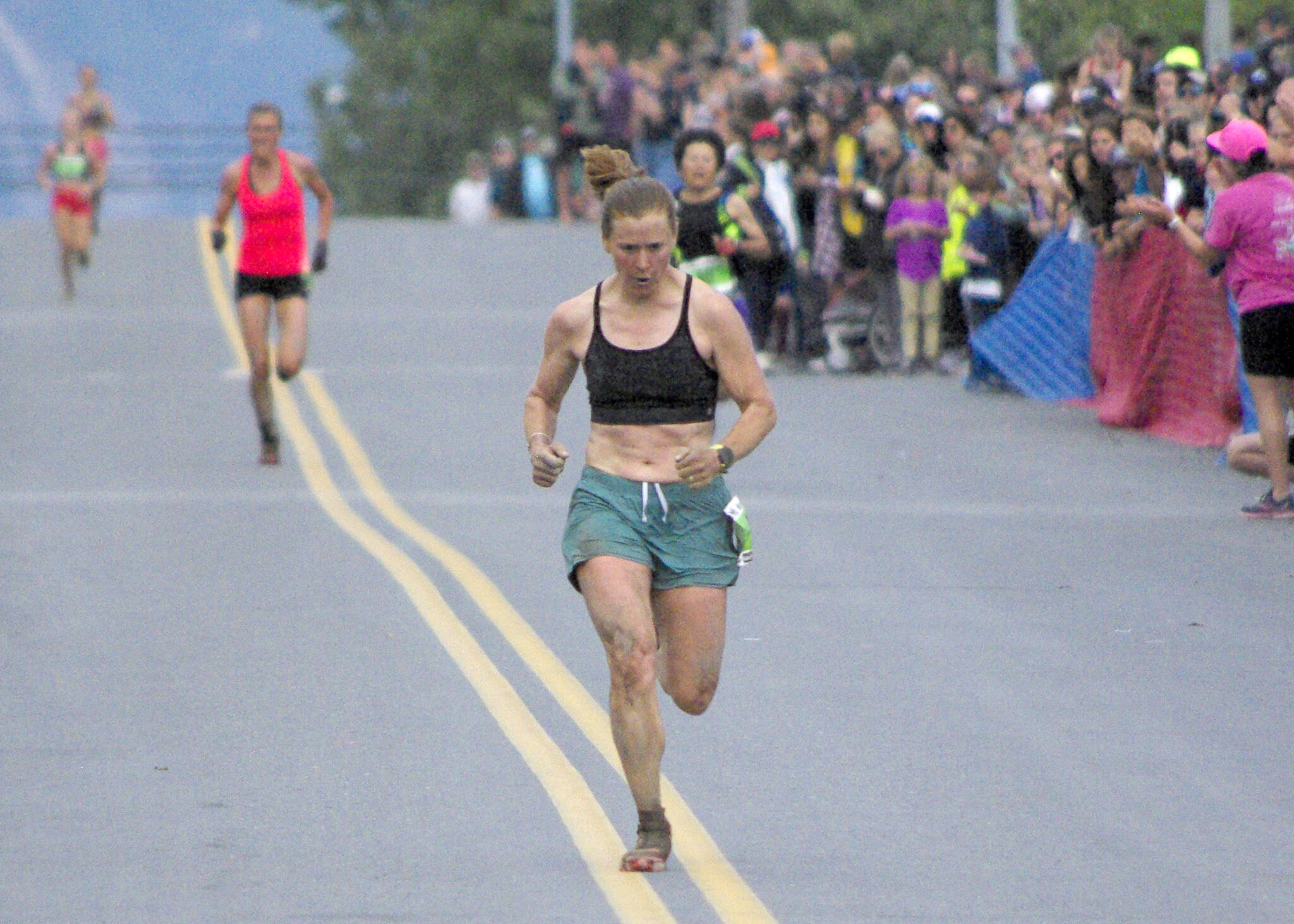How does the Mount Marathon Race stay local?
That was the question in the minds of many people I talked to about a new rule enacted by the race committee for 2021. The rule says that to gain automatic entry into the next year’s race, athletes must finish in the top 50% of their age group. The rule was made to improve odds of getting into the popular Fourth of July race via lottery, but many worried it would cast too many locals out of the race.
I went to do event coverage Monday thinking about how to keep MMR local. Then midway through the day, something hit me like one of the famed pitches of 60 degrees on the mountain.
What is a Seward local?
I realized as I talked to many of my local sources for the race that many did not live in Seward for 12 months a year. Some split time between Seward and other places. Some had graduated from Seward High School but no longer lived there. Some owned property in Seward but didn’t live there.
That got me to thinking about things I’d read and seen about the town recently.
In May, Ashlyn O’Hara and Camille Botello wrote in the Clarion about the paucity of houses for sale in Seward. Henry Burns, the principal of Seward High School, could not find a house to buy in town upon getting his new job in the summer of 2021. Eventually, his family bought a home in Anchorage, making for a brutal commute. Burns said the housing shortage also was hurting his ability to hire employees.
Later in May, Marc Lester of the Anchorage Daily News also wrote about the housing shortage. The story said the lack of homes is hurting Seward’s ability to attract employees all over town, including at mainstays of the economy such as the Alaska SeaLife Center and Providence Seward Medical Center.
In late June, Sam McDavid of the Seward Journal wrote of a city corrections officer, who, due to trouble finding housing, left town, with spouse and three children in tow.
Then I remembered a May 2 meeting of the Kenai Peninsula Borough School District Board of Education in Seward. The theme of the public comments was that Seward parents and educators were not happy with the direction of education in Seward due to open staff positions and a difficulty in retaining staff due to pay, benefits and Seward’s housing issue.
Finally, there was the late May article by Alex DeMarban of the ADN about a new dock that will be built in Seward allowing the city to welcome cruise ships with 4,500 passengers, as opposed to the current dock’s ability to handle 2,500-passenger ships.
In general, the article portrayed Seward as excited about the money the new dock will bring, but Trent Gould, owner of Kayak Adventures Worldwide, struck a note of caution: “As a tour operator, we recognize the importance of tourism and we want to manage it in a sustainable way with people having a say in that growth. When the cruise ships come in, those values don’t always align.”
What does all this have to do with Mount Marathon?
Families and a solid school system are the center of the Seward community that serves as the heart of the race. Max King, a professional trail runner from Oregon, has his pick of races around the world. He was in Seward for the third time since 2018 on Monday, winning his second men’s title, because he loves the community aspect of Mount Marathon.
In June 2018, I did a story about Dan Marshall, a teacher at the high school, retiring as the cross-country coach after 23 years. Marshall chose to tie his successful program closely with the Mount Marathon Race and all the wonderful running trails in Seward.
His Tuesday night runs in the summer molded the running culture of the city by creating families and a next generation of runners that craved trails and mountains.
Marshall said in that story that Seward High School had 280 students in 1997. On April 21, the district listed enrollment at 119.
As a sports editor at the Clarion for nearly 25 years, I’ve often marveled at the intense school pride that Kenai Peninsula communities put into their schools and sports. Even among such fervent schools, Seward has always stood out.
I still remember the valiant way Seward’s football team lost to Soldotna 26-13 in the 2002 small-schools state semifinals, a year after the Seahawks had actually defeated the Stars 8-6 in those same state semifinals. (Let it sink in that 20 years ago, Seward was able to compete with Soldotna in football.)
That Seward pride is still alive, well and able to do incredible things, as evidenced by Lydia Jacoby’s gold medal in last year’s Summer Olympics and the viral video of the Seward watch party that accompanied the race.
Problems with housing, education and the unique pressures put on a community by a seasonal summer tourism economy threaten that Seward pride, and that includes in iconic Fourth of July races.
When it comes to keeping the Mount Marathon Race local, the 50% rule is the least of Seward’s problems.


